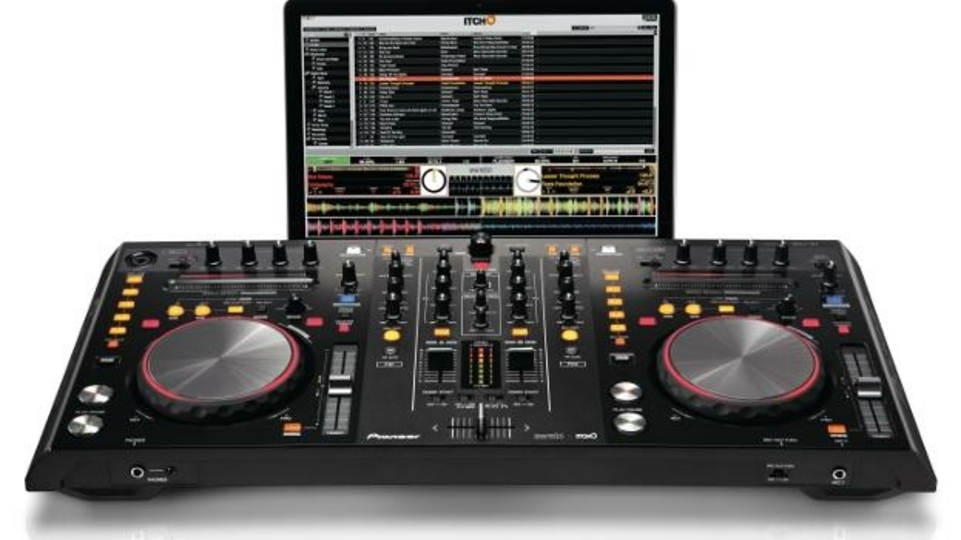An Itch To Scratch…
Does Pioneer’s new DDJ-S1 Itch controller cut the mustard?

The DJing market has defiantly changed over the last few years and options for the budding blender are vast. With this in mind, manufacturers have to stay in touch with all these new advances or find themselves not being relevant in today’s new world. Pioneer have made the jump into the controller market with two dedicated controllers — one for Native Instruments’ Traktor, and the other for Serato’s Itch DJing platform. In this review, we are going to scratch the surface of their DDJ-S1 Itch controller and see whether it can cut the mustard.
For years, Pioneer has been spearheading and subsequently leading the CDJ market, becoming the industry standard in CDJ decks. It is fair to say that Pioneer had a vested interest in keeping the DJ world hardware-based. However, in recent times, they have started to make strides into the swelling laptop DJ market, with their Rekordbox software and its integration with the new CDJ range. The next step was always going to have to be self-contained hardware controllers for the leading DJ software companies. Enter DDJ-S1, the new controller for Serato’s increasingly lauded Itch software.
Liberating Experience
The DDJ-S1 is set up to mimic the industry-trusted Pioneer CDJ series. Two CDJ-style control panels flank a two-channel mixer with dual effect banks, three-band EQ and adjustable curve crossfader. The device is elevated by two removable feet that allow the DJ’s laptop to be docked underneath the controller, so only the screen protrudes. This is testament to the Pioneer hardware ethic that all of the common functions from the software can be controlled without using the mouse or keyboard, which is a liberating experience for the DJ.
As with all Pioneer kit, the interface is simple, intuitive and easy to use. On the simplest level, anyone who is familiar with Pioneer kit could jump on here and get to grips with things pretty quickly. Each ‘CDJ’ section contains the same platter you would find on the CDJ-400, five hot cue triggers that handily illuminate when allocated to a cue point in the software, plus the standard navigation buttons found throughout the CDJ range, keeping that Pioneer feel of continuity.
Newer additions include a nifty needle-search ribbon, which can be used to skip through an entire track with the swipe of a finger. This is very useful for auditioning tracks quickly. Below the ribbon is an LED indicating how far through the track you are — this is another neat visual indicator on the controller that avoids the necessity to glance at the laptop screen.
Another newer feature which some older CDJ users may not be familiar with is the ‘slip’ function. When slip mode is activated, the track will snap back into place after any platter movement, loop or cue juggling — as if you had never made the change. This allows for mid-mix backspins or single beat loops that don’t affect the position of the track — very cool indeed.
Pioneer’s loop functionality is — along with the virtual scratch — one of the features that make their kit sing. And on the DDJ-S1, the loops are better than ever. The ubiquitous yellows lights for ‘in’ and ‘out’ remain, but are joined by a user-friendly dial that changes the auto-loop length in the software and is depressed to enter or exit the loop. This allows the DJ to cut super-sharp, perfectly-locked loops instantly and mid-mix, taking some of the stress out of live remixing.
The mixer section is equally straightforward. A standard two-channel mixer with three-band EQ (which is customisable within the software) and an adjustable curve crossfader sit between two banks of effects, which can be individually allocated to deck A, deck B, the master output or even the mic input. They can also be chained, allowing some pretty neat results, like the classic delay/reverb or filter/echo combinations.
QUALITY
The clearest nod to the mobile DJ who wants an all-in-one solution for mobile work or the small clubs market is the dual mic inputs, with included talk-over functionality and EQ. The mic and aux channels will also run in the event of your computer crashing — this is a nice safety feature that means the dreaded laptop crash needn’t result in silence and the abuse of a baying crowd.
The one point of contention that is rearing its ugly head seems to be the price of the unit. At £1,099, it is far from cheap. Though Pioneer kit has always been at the top-end of the market for price, the quality has always shone through, and the DDJ-S1 will be no exception. In comparable terms, this unit sidesteps the need to own CDJs, a mixer and an EFX – which puts the cost into context nicely.
Although perhaps best suited to mobile DJs who love the feel and reliability of Pioneer kit, the functions in the software and the tactile control offered by the DDJ-S1 mean that the possibilities for creative DJing are pretty limitless. What you have here is a serious controller for a piece of software that is growing in popularity all the time.
| Price | £1099.00 | |
| Contact | pioneerdj.eu | |
| Build Quality |
9.0 | |
| Ease of Use | 9.0 | |
| Features | 8.0 | |
| Value for Money | 7.5 | |
| Sound Quality | 8.0 | |
| Hype | Probably one of the better Itch controllers on the market, with the recognised Pioneer build quality | |
| Gripe | Hefty price tag may put a few DJs off | |
| Conclusion | A well-executed controller with innovative features and superb integration with Itch. | |
| Overall Score | 8.3/10 | |
| Shop |
